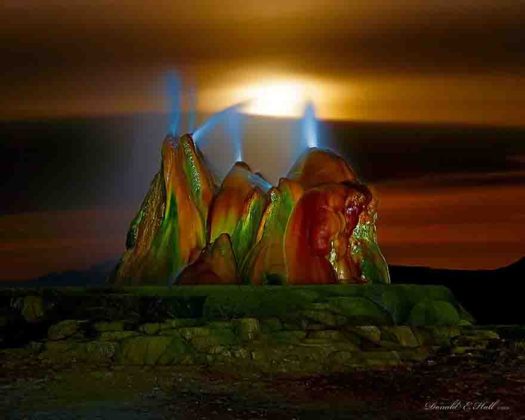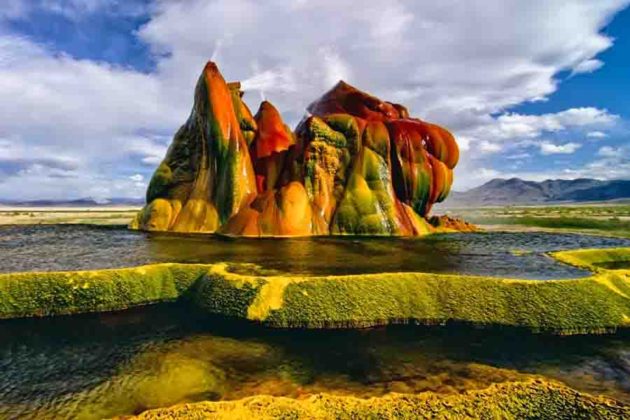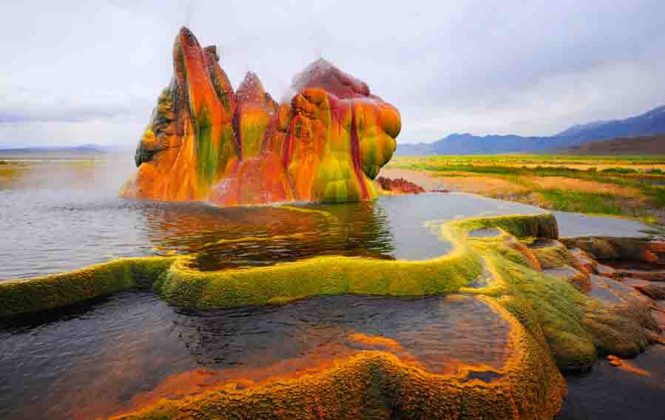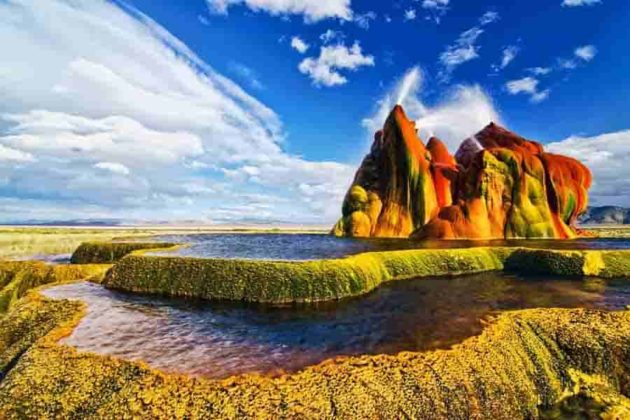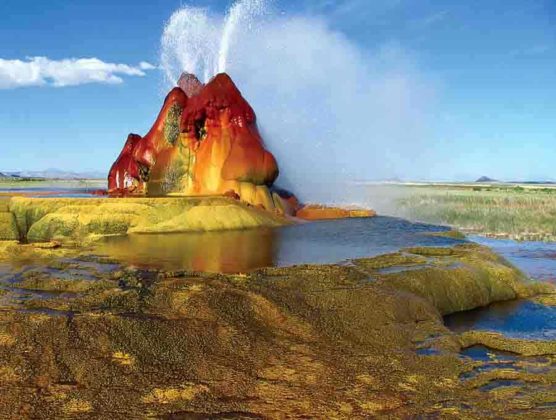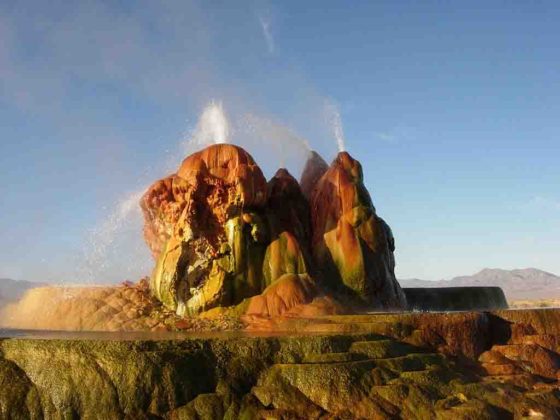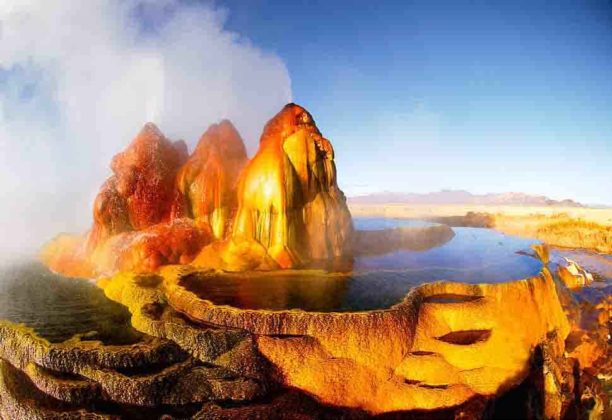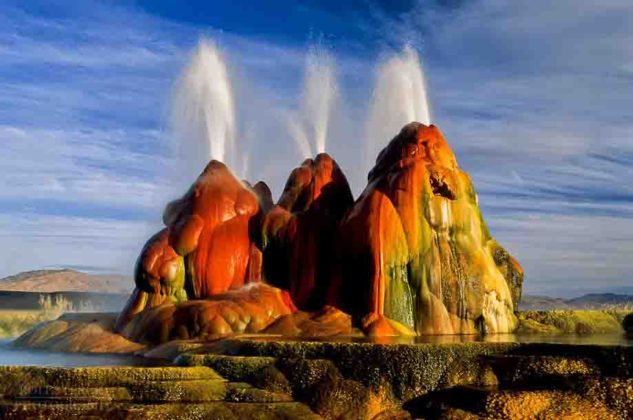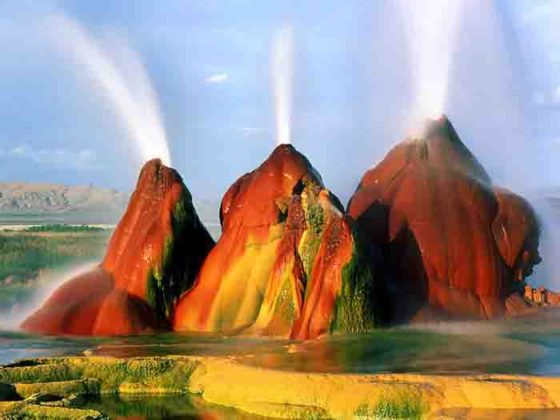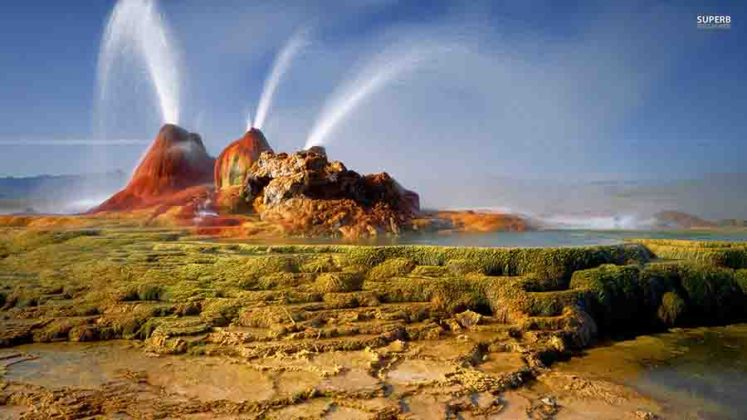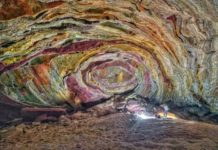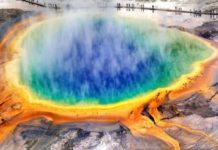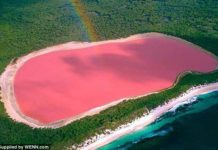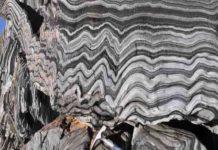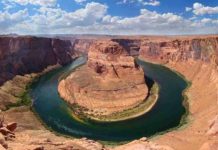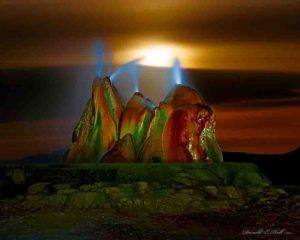
There are two geysers on the Fly Ranch property. The first was created nearly 100 years ago as part of an effort to make a part of the desert usable for farming. A well was drilled, and geothermal boiling water (200 degrees) was hit. Obviously not suitable for irrigation water, this geyser was left alone and a 10 to 12-foot calcium carbonate cone formed.
In 1964 a geothermic energy company drilled a test well at the same site. The water they struck was that same 200 degrees. Hot, but not hot enough for their purposes. The well was supposedly re-sealed, but apparently, it did not hold. The new geyser, a few hundred feet north of the original, robbed the first of its water pressure, and the cone now lies dry.
This second geyser, known as Fly Geyser, has grown substantially in the last 40 years as minerals from the geothermal water pocket deposit on the desert surface. Because there are multiple geyser spouts, this geyser has not created a cone as large as the first, but instead an ever-growing alien looking mound. The geyser is covered with thermophilic algae, which flourishes in moist, hot environments, resulting in the multiple hues of green and red that add to its out-of-this-world appearance.
Fly Geyser
Fly Geyser, also known as Fly Ranch Geyser is a small geothermal geyser located on private land in Washoe County, Nevada, about 20 miles (32 km) north of Gerlach. Fly Geyser is located near the edge of Fly Reservoir in the Hualapai Geothermal Flats and is approximately 5 feet (1.5 m) high by 12 feet (3.7 m) wide, counting the mound on which it sits.
In June 2016, the non-profit Burning Man Project purchased the 3,800 acres (1,500 ha) Fly Ranch, including the geyser, for $6.5 million. The Burning Man Project began offering limited public access to the property in May 2018. The geyser contains thermophilic algae, which flourishes in moist, hot environments, resulting in multiple hues of green and red coloring the rocks.
Location
Fly Geyser is located on the Fly Ranch in Hualapai Flat, about 0.3 miles (0.48 km) from State Route 34 and about 25 miles (40 km) north of Gerlach, Nevada. It is due east of Black Rock Desert.
Formation of Fly Geyser
The source of the Fly Geyser field’s heat is attributed to a very deep pool of hot rock where tectonic rifting and faulting are common.
The first geyser at the site was formed in 1916 when a well was drilled seeking irrigation water. When geothermal water at close to boiling point was found, the well was abandoned, and a 10–12-foot (3.0–3.7 m) calcium carbonate cone formed.
In 1964 a geothermic energy company drilled a second well near the site of the first well. The water was not hot enough for energy purposes. They reportedly capped the well, but the seal failed. The discharge from the second well released sufficient pressure that the original geyser dried up. Dissolved minerals in the water, including calcium carbonate and silica, accumulated, creating the cones and travertine pools.
The geyser has multiple conic openings sitting on a mound: the cones are about 6 feet (1.8 m), and the entire mound is 25 to 30 feet (7.6 to 9.1 m) tall.


